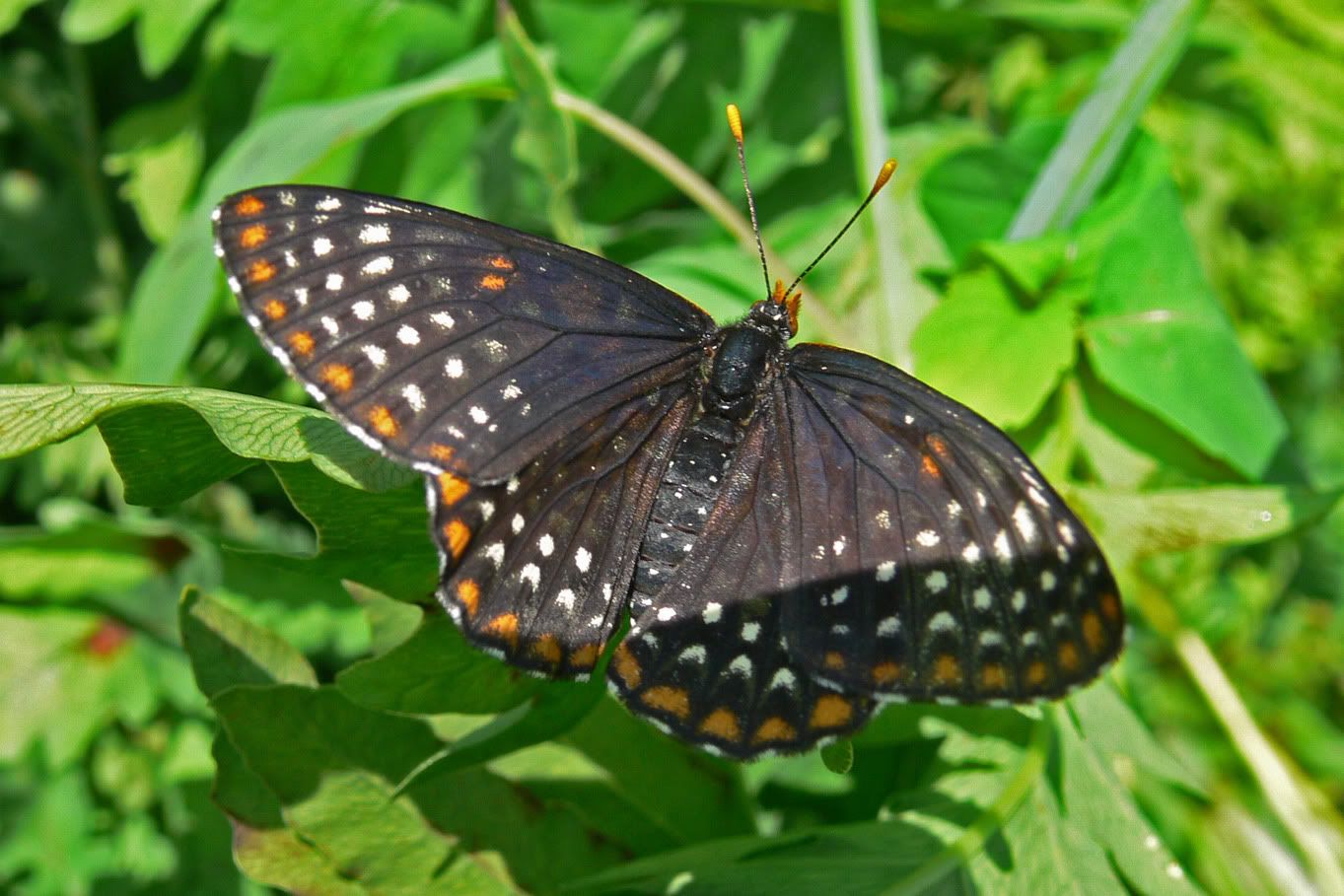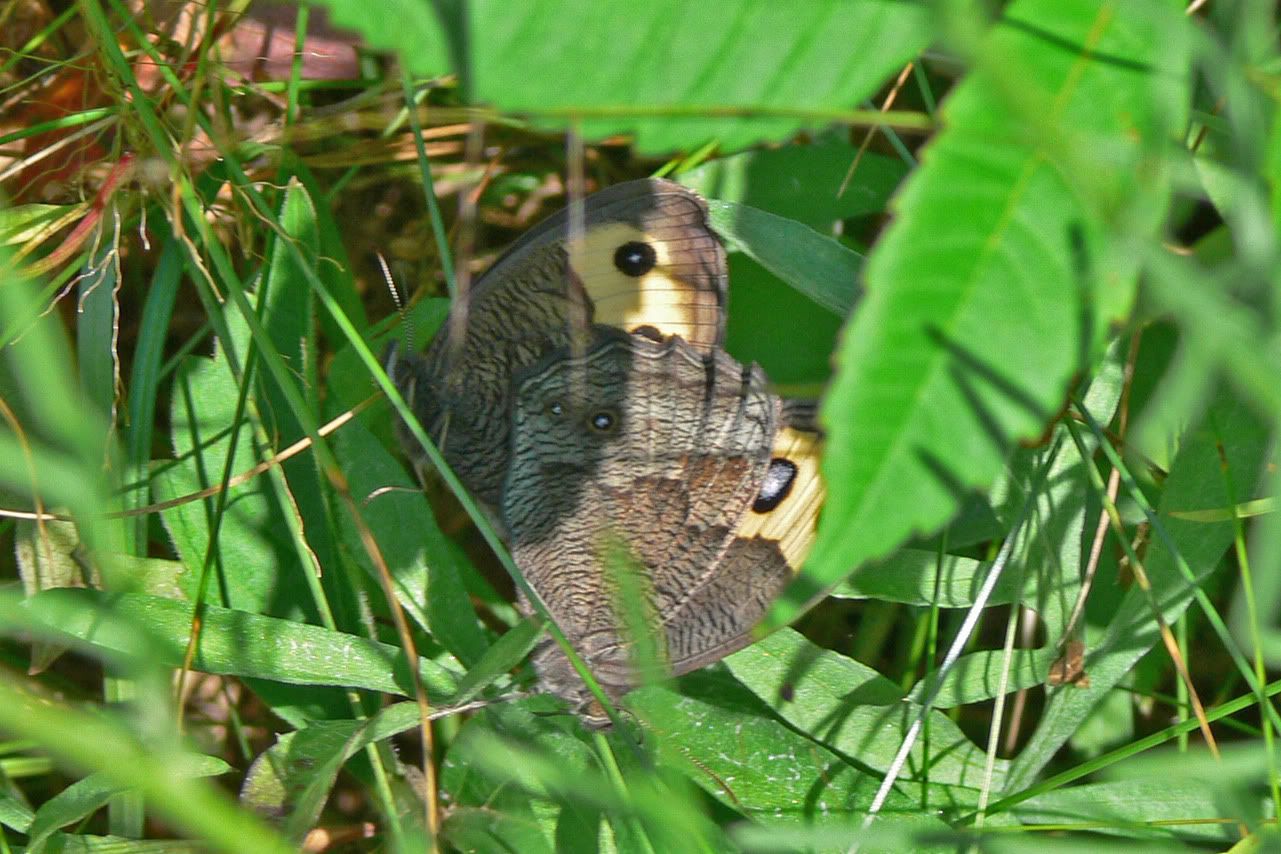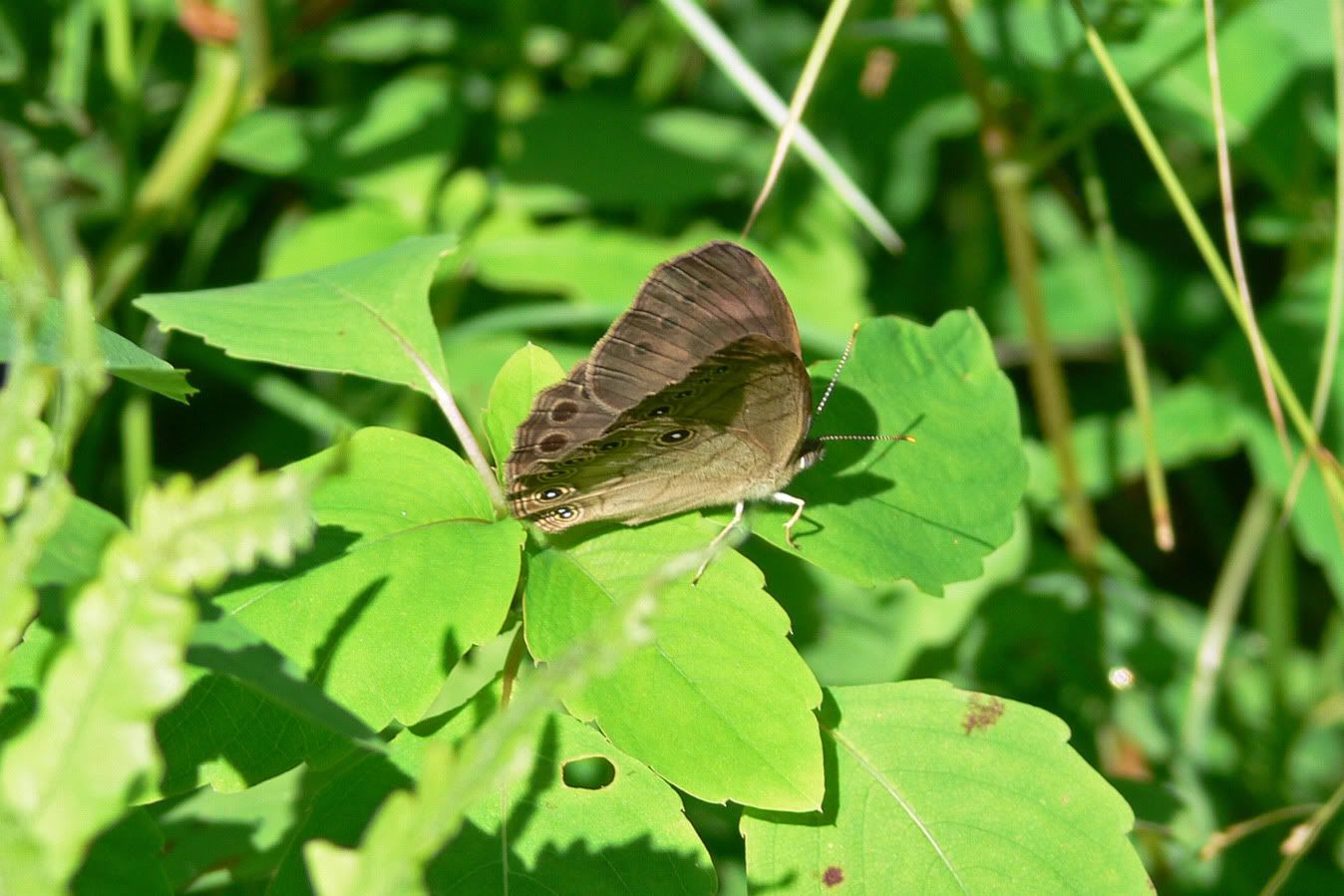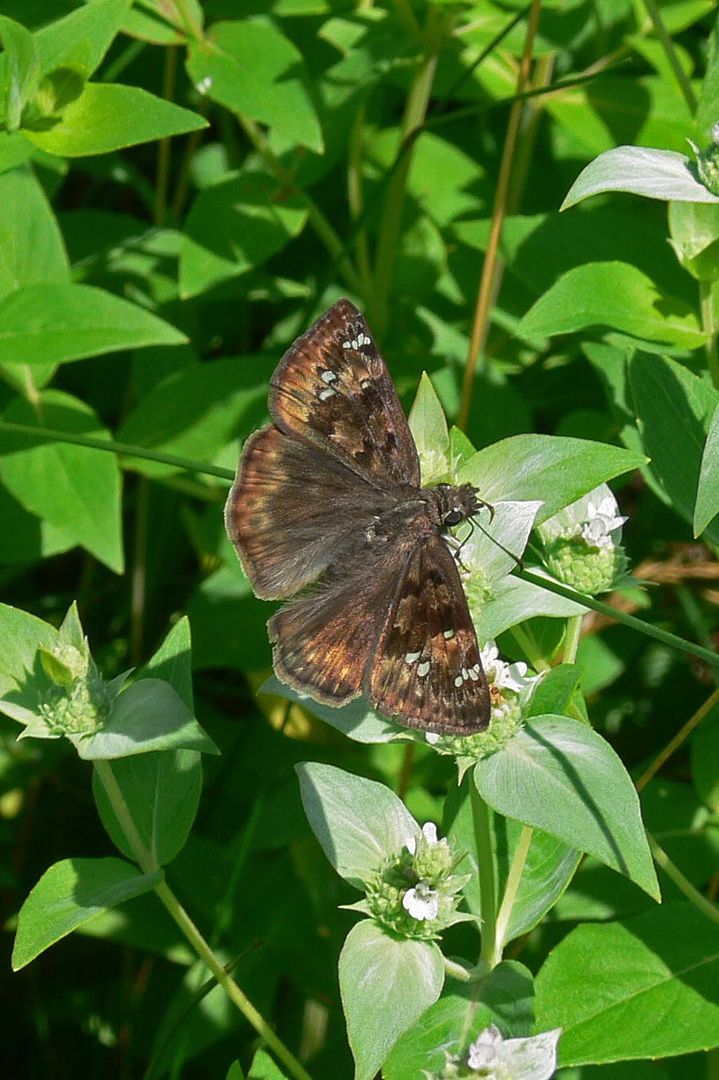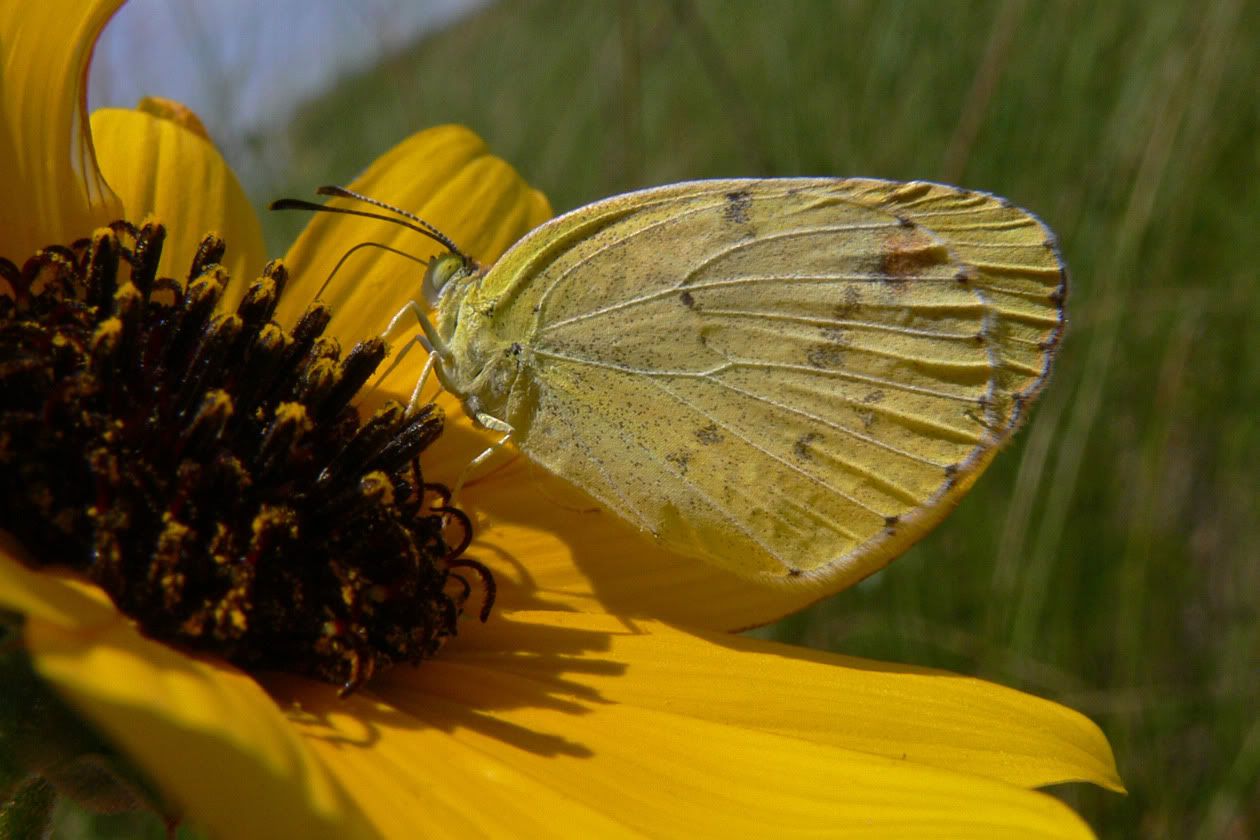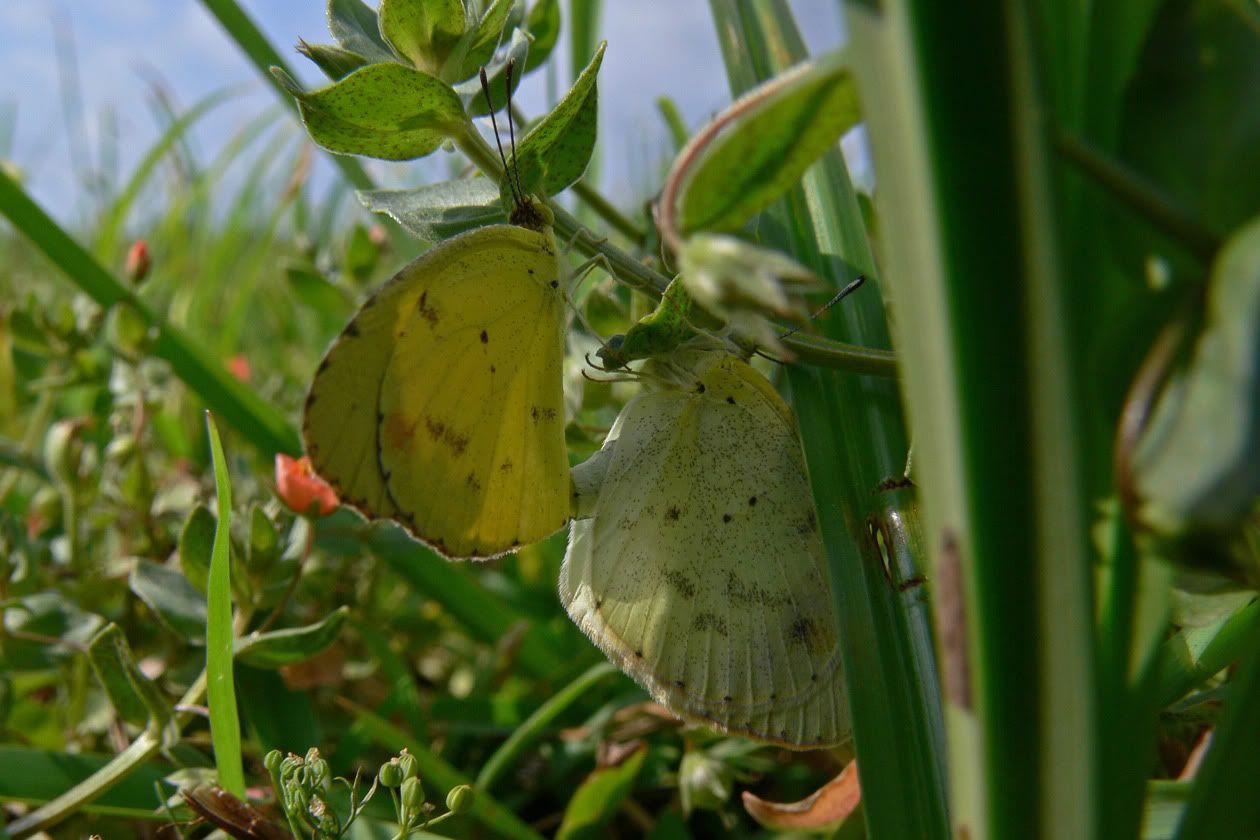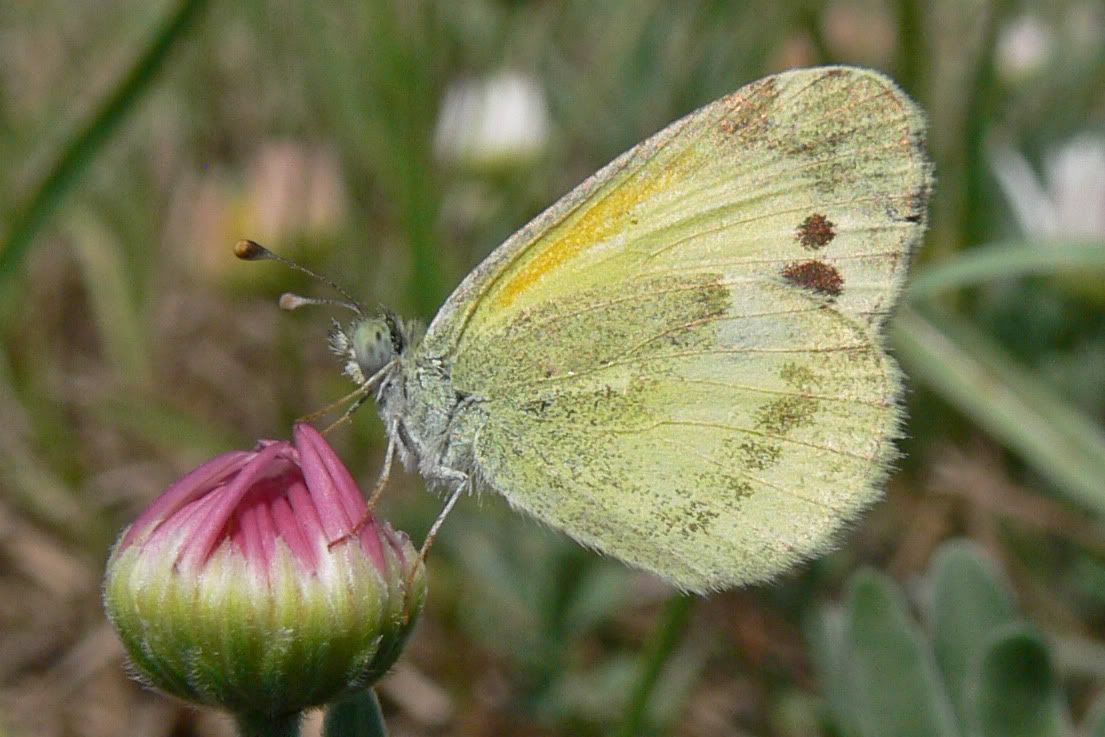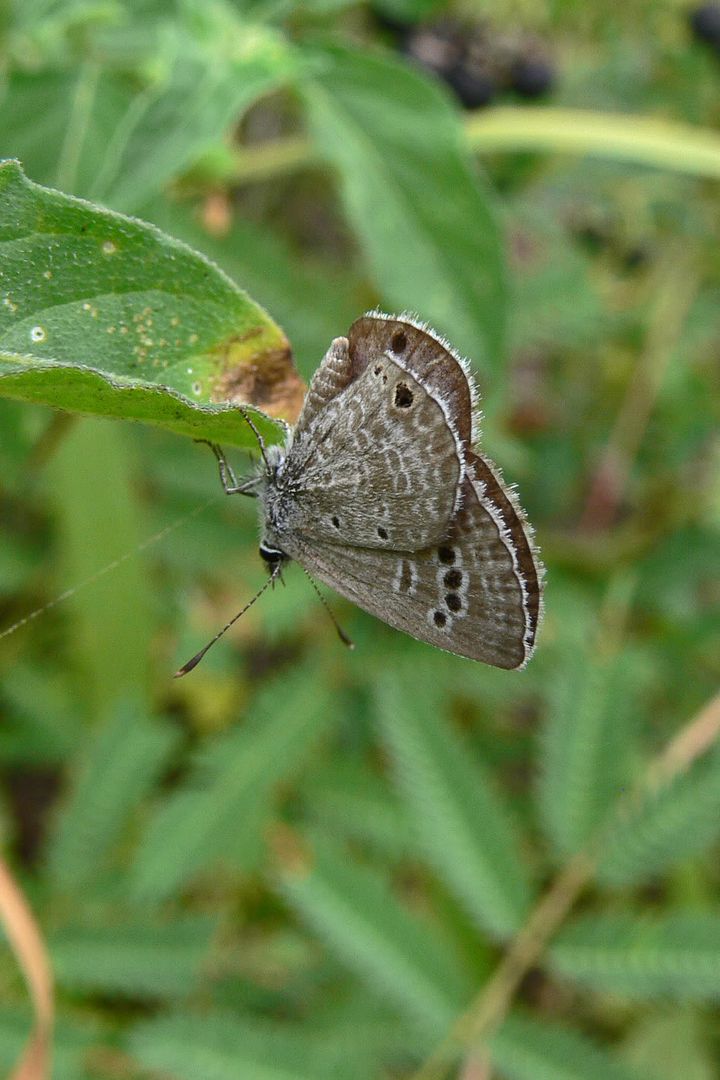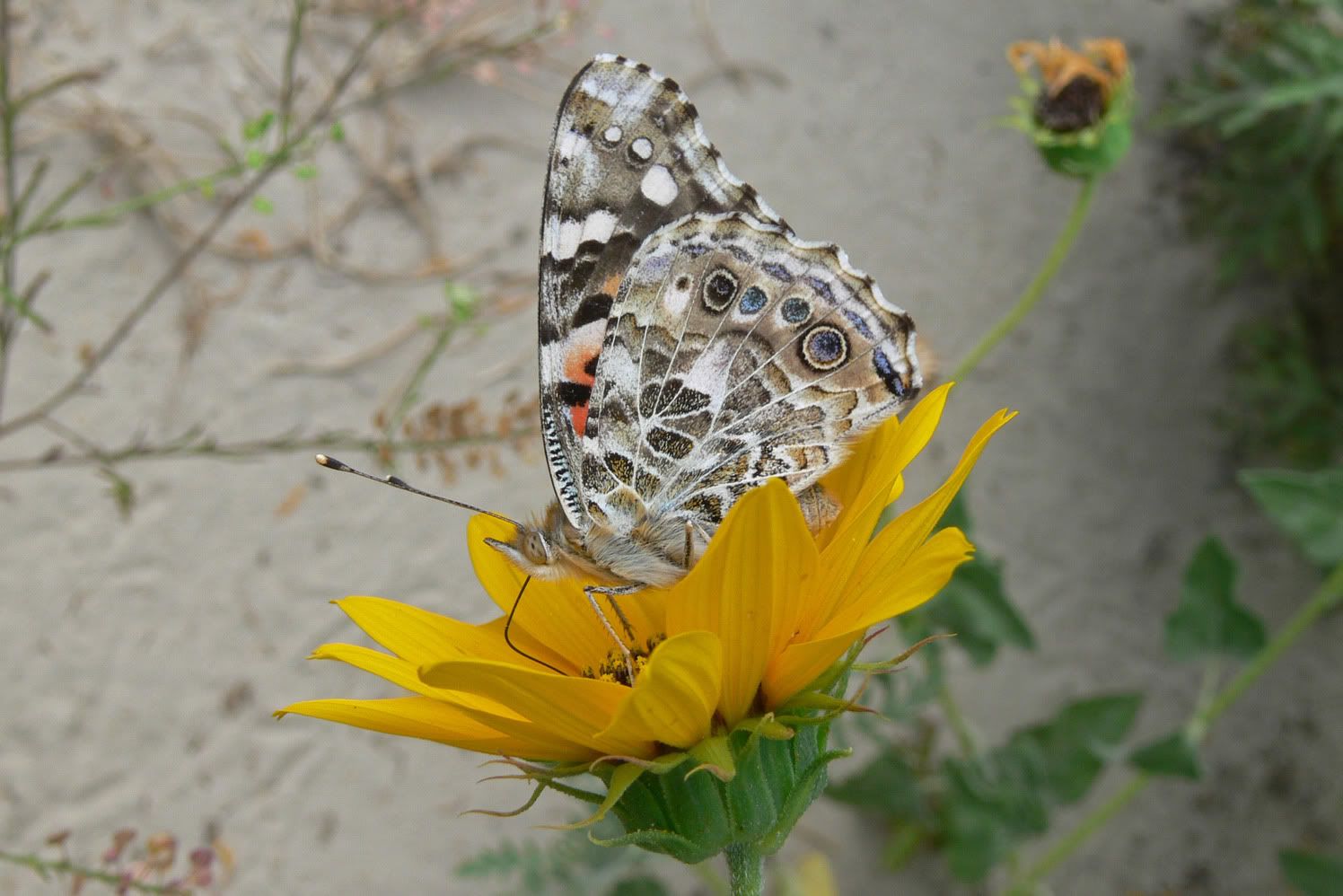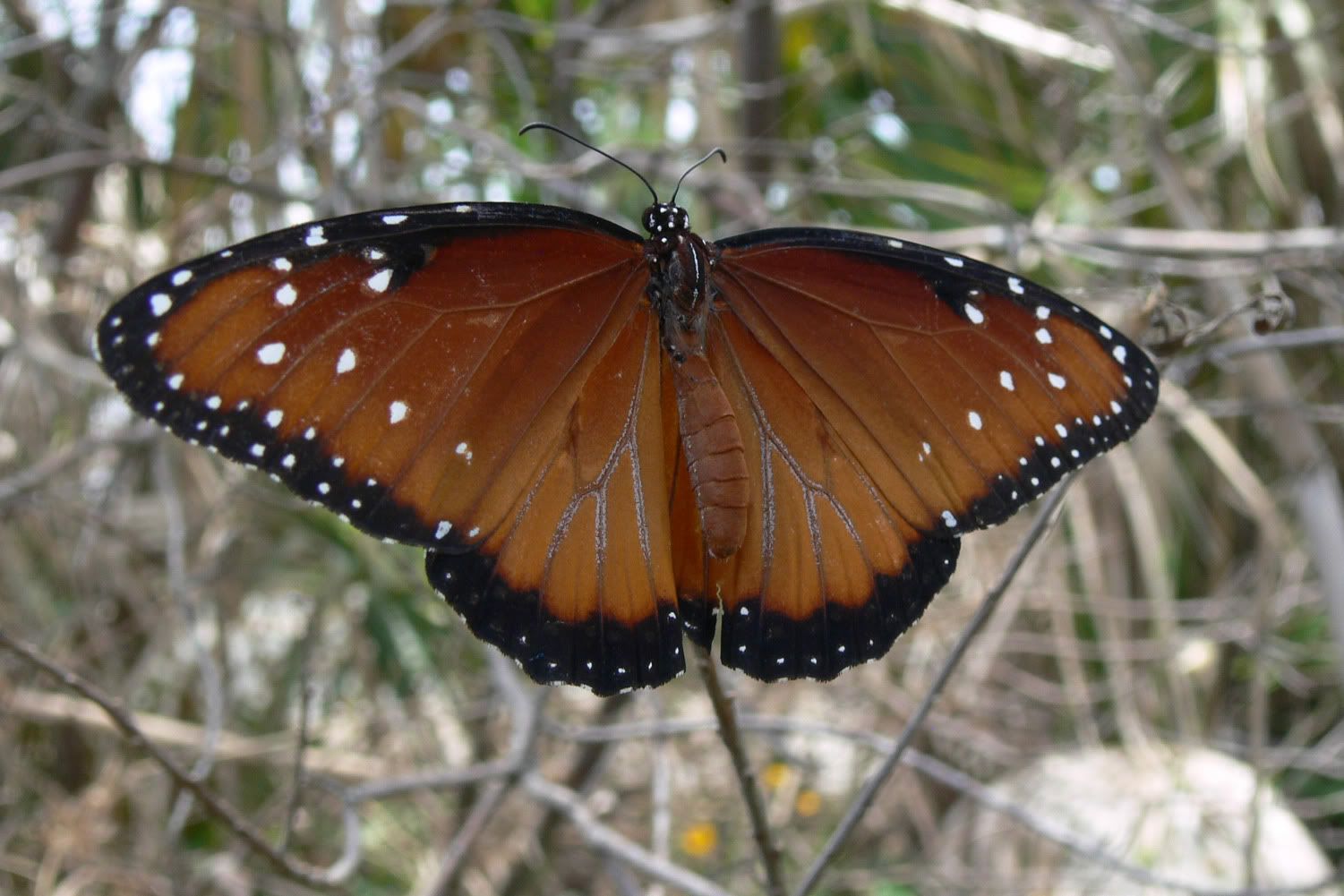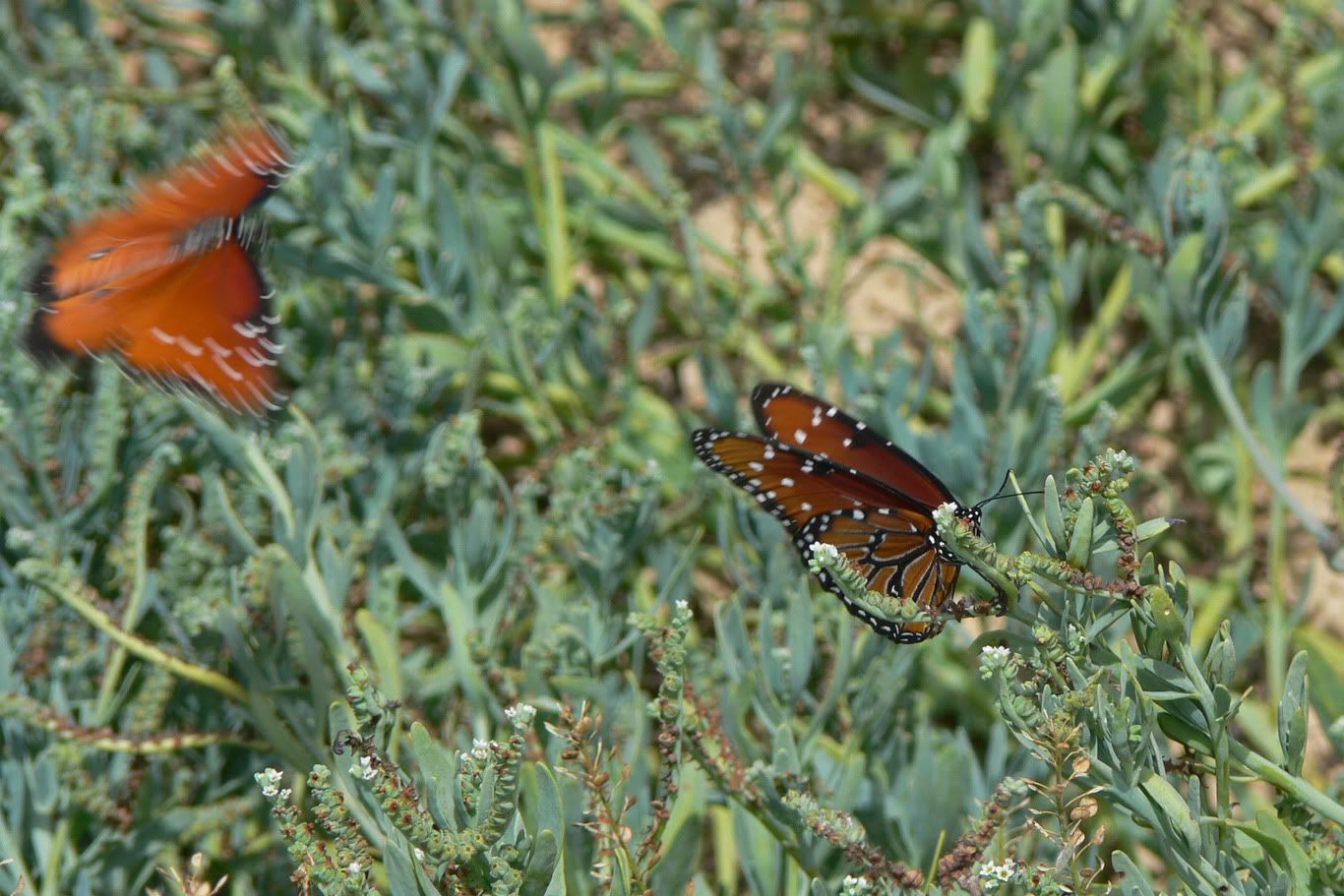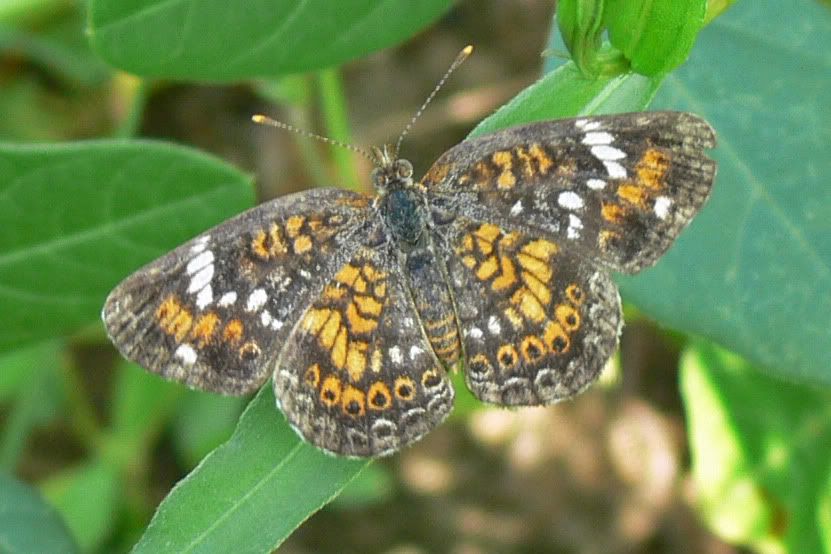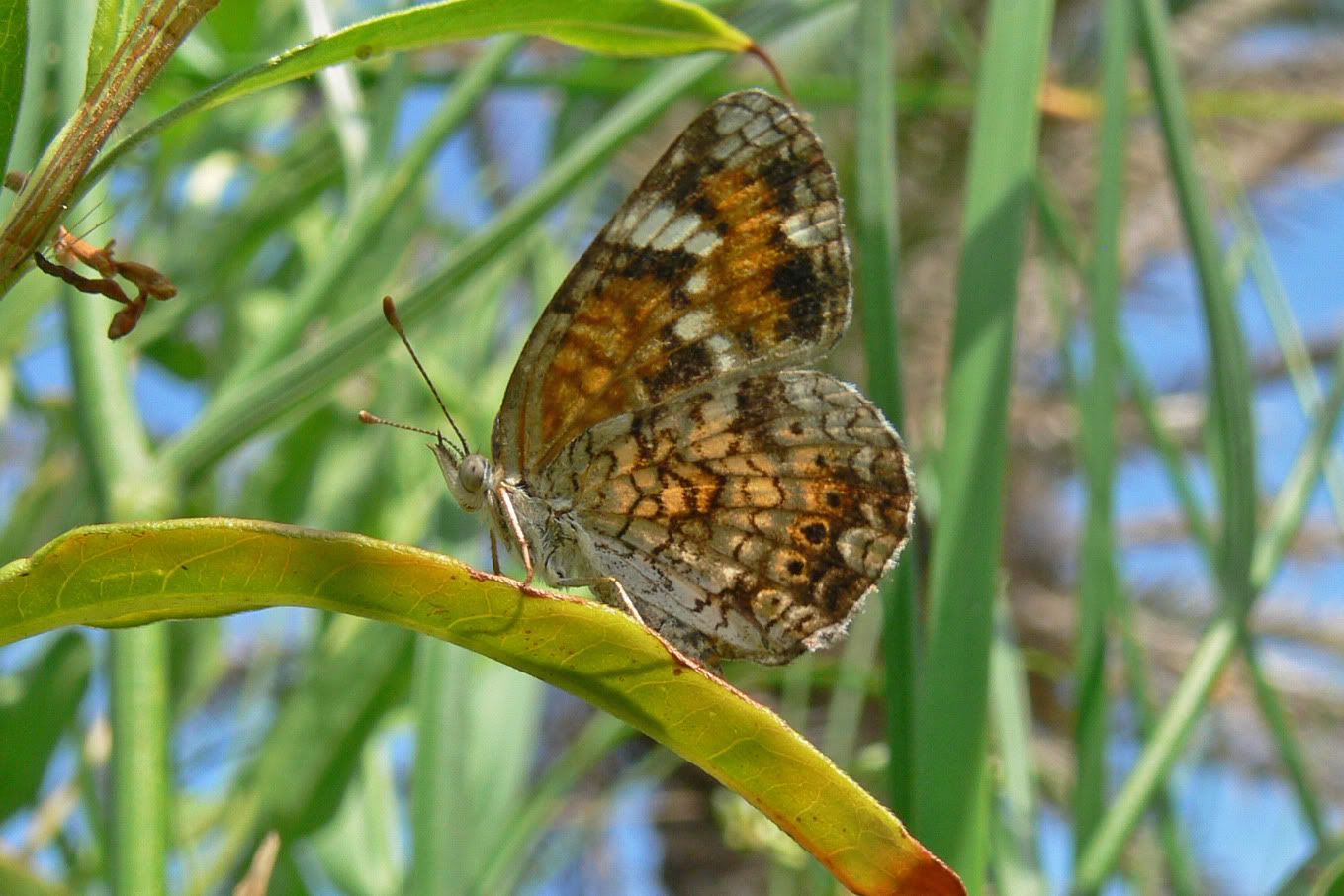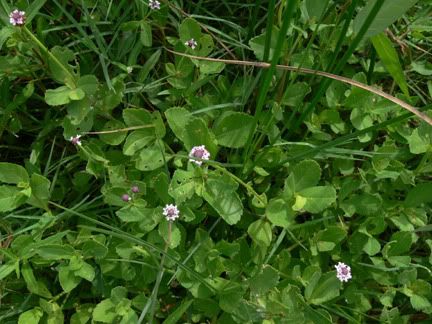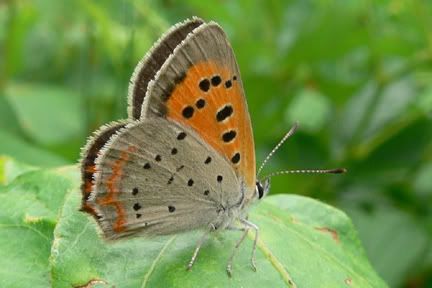The weather was abnormally rainy from April through June, so butterfly sightings were low. But with optimism in our hearts and a good forecast from weather.com, we embarked on the annual Carroll Co., MD butterfly count.
Alas, the numbers were low. In all, we saw a mere 24 species. However, the favorites were accounted for.
Swallowtails:
None!!!
Sulphurs:
Orange Colias eurytheme
Clouded Colias philodice -- I'm slightly skeptical inasmuch as we only went by the lemon-yellow color, which is not a reliable separator from the Orange.
Hairstreaks:
Coral Hairstreak Satyrium titus
Edwards Hairstreak Satyrium Edwardsii
Red-Banded Hairstreak Calycopis cecrops
Coppers:
American Copper Lycaena phlaeas
Blues:
Summer Azure Celastrina neglecta/ladon
Eastern Tailed Blue Everes (Cupido) comyntas
Brushfoots:
Great Spangled Fritillary Speyeria cybele
Pearl Crescent Phyciodes tharos
Baltimore Checkerspot Euphydryas phaeton
Buckeye Junonia coenia
Hackberry Emperor Asterocampa celtis
Monarch Danaus plexippus
Little Wood Satyr Megisto cymela
Common Wood Nymph Cercyonis pegala
Appalachian Brown Satyrodes appalachia
Skippers:
Dun Euphyes vestris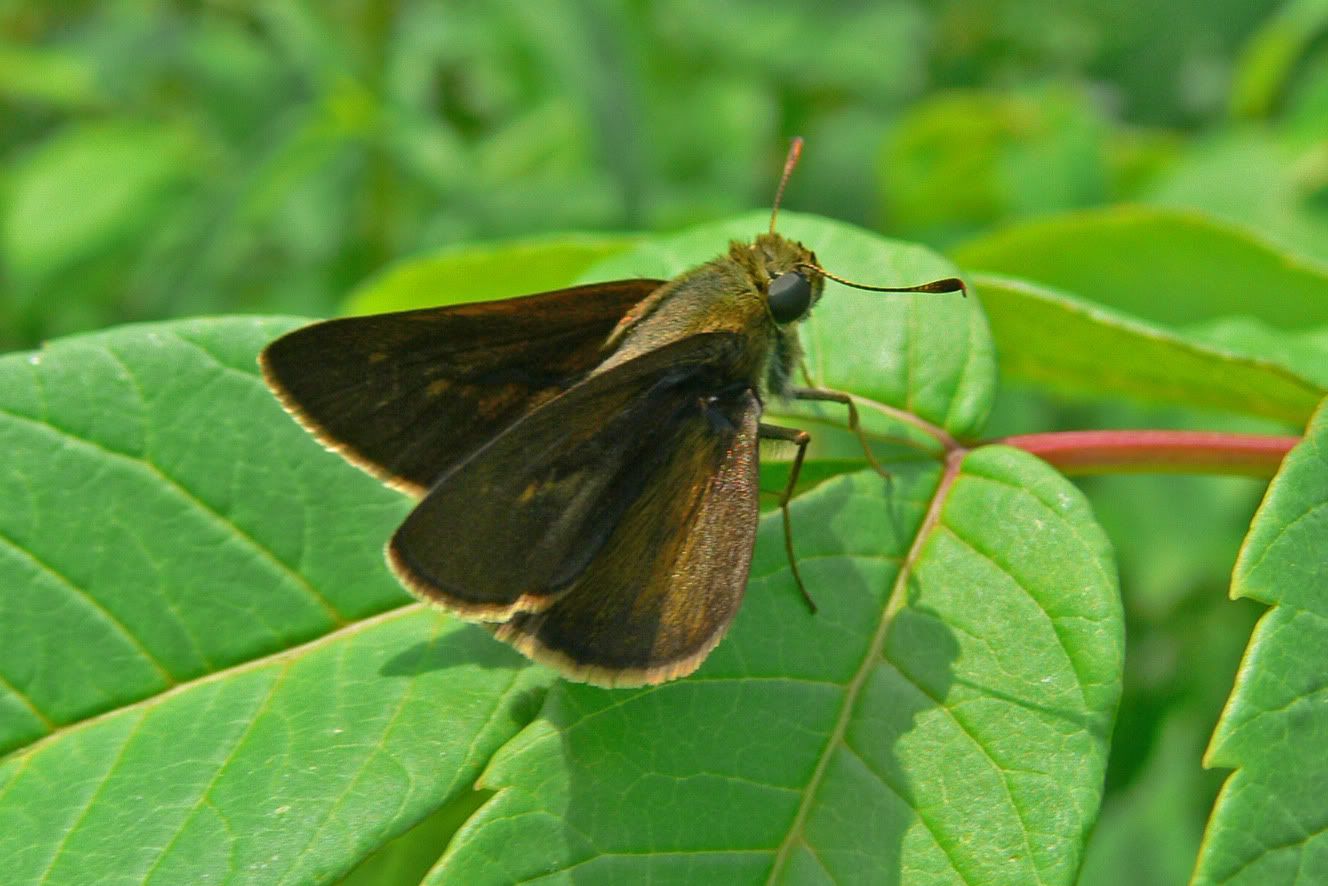
Little Glassywing Pompeius verna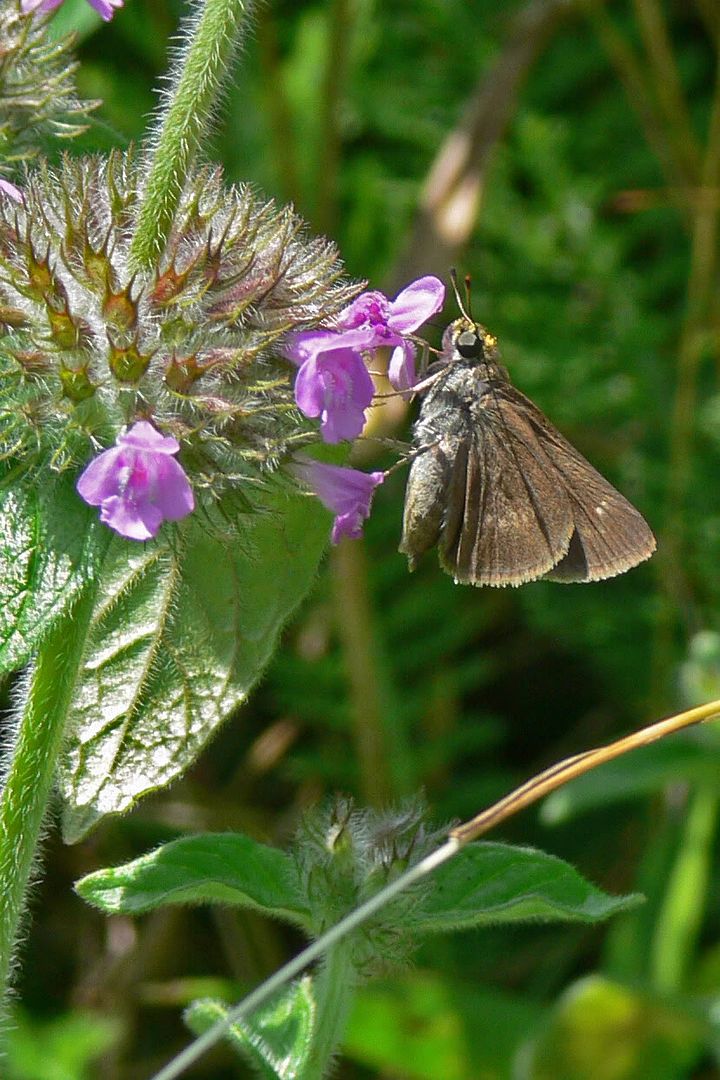
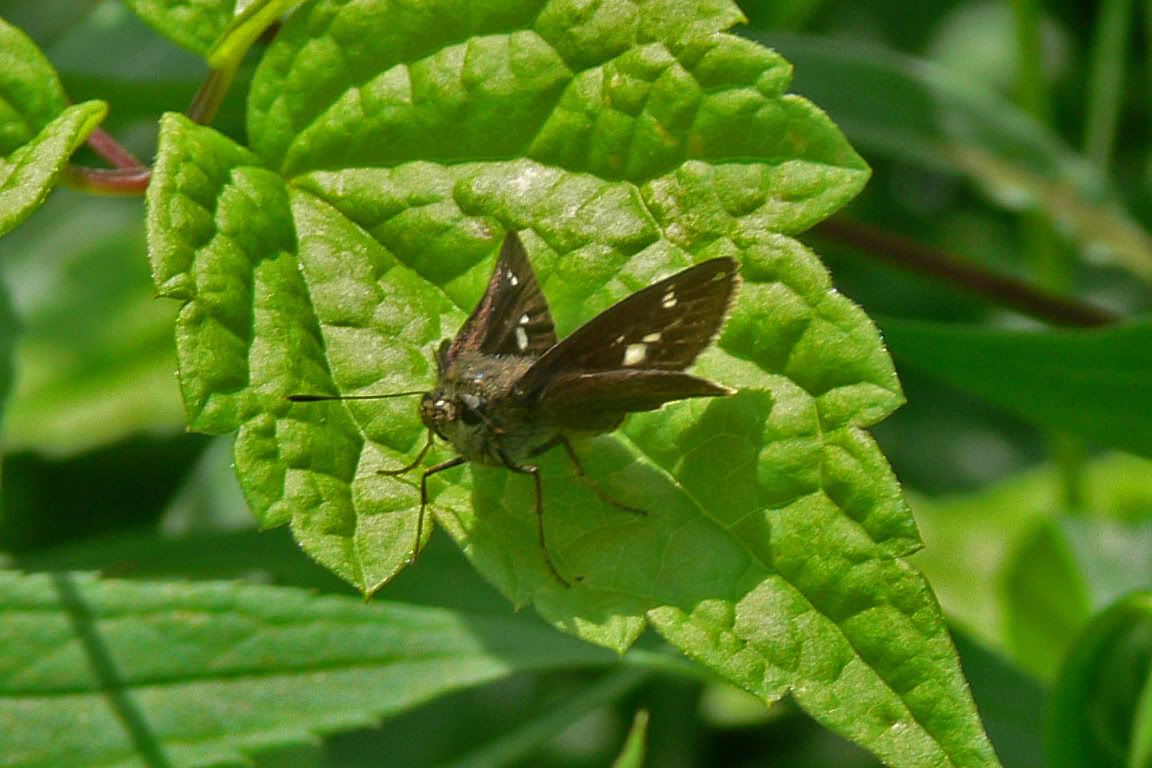
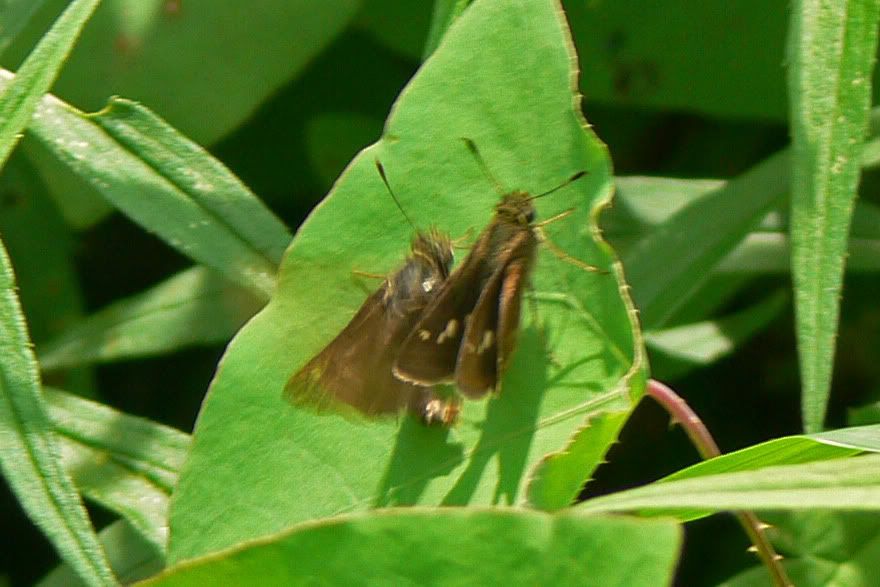
Least Ancyloxypha numitor
Mulberry Wing Poanes massasoit
Silver-Spotted Skipper Epargyreus clarus
Wild Indigo Duskywing Erynnis baptisiae
Horace's Duskywing Erynnis horatius
JRC
Read more...
Sunday, July 12, 2009
Carroll County Count 2009-07-04
Posted by
Jeff Cagle
at
10:19 PM
0
comments
![]()
Labels: Butterflies
Friday, July 10, 2009
Galveston, TX 6/9/2009 - 6/12/2009
In June we visited Galveston Island, TX. We expected widespread devastation from Hurricane Ike, but at least at the west end of the island, rebuilding was proceeding along. Certainly, the butterfly population was not suffering!
The state park was closed for "rebuilding" -- as a friendly ranger informed me after an hour of photography. Oops. It was a little unclear what needed to be rebuilt, though. The butterfly habitat was doing quite well.
The island has an impressive sulphur diversity. I saw Orange, Large Orange, Little Yellow, Dainty, and Dogface Sulphurs (surely I saw a Cloudless also?! My memory fails here).
Interestingly, there were many Queens on the island, but I could not find any obvious milkweeds there.
Sulphurs:
Orange Colias eurytheme
Little Yellow Eurema lisa -- these were ubiquitous; we saw over 100 of them.
Click for shots
Dainty Nathalis iole -- this individual narrowly missed death by Robber Fly.
Click for shot
Large Orange Phoebis agarithe (perhaps philea?)
Dogface Colias cesonia
Whites:
Checkered White Pontia protodice -- these entirely replaced the Cabbage White.
Click for shots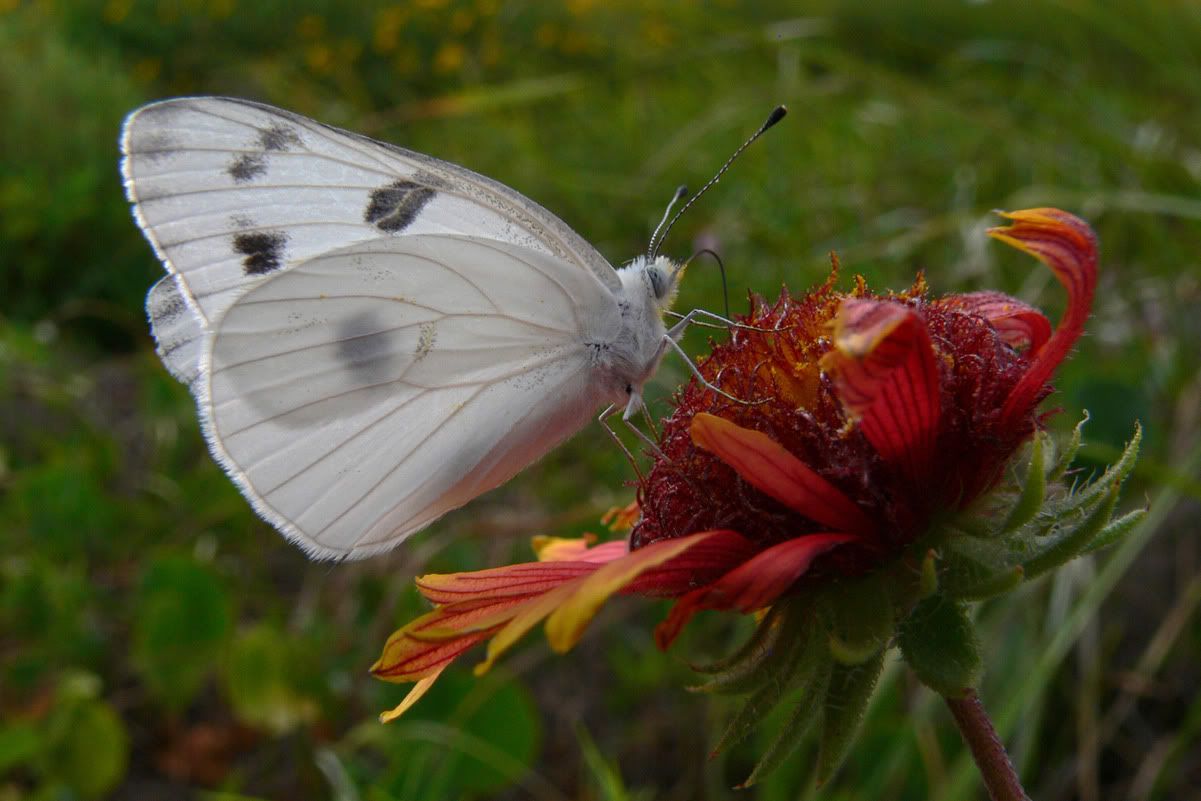
The female is more strongly marked. This one was laying eggs on what appears to be Lepidium, Pepperweed.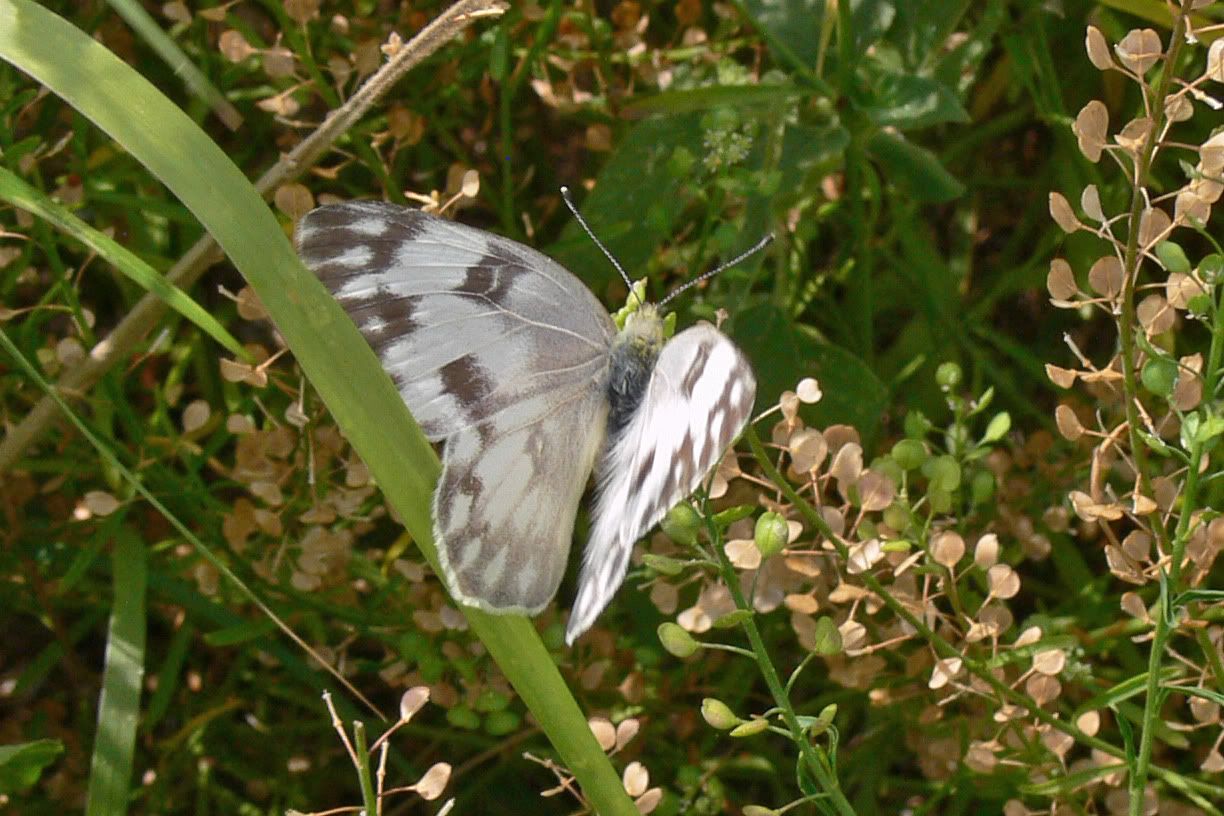
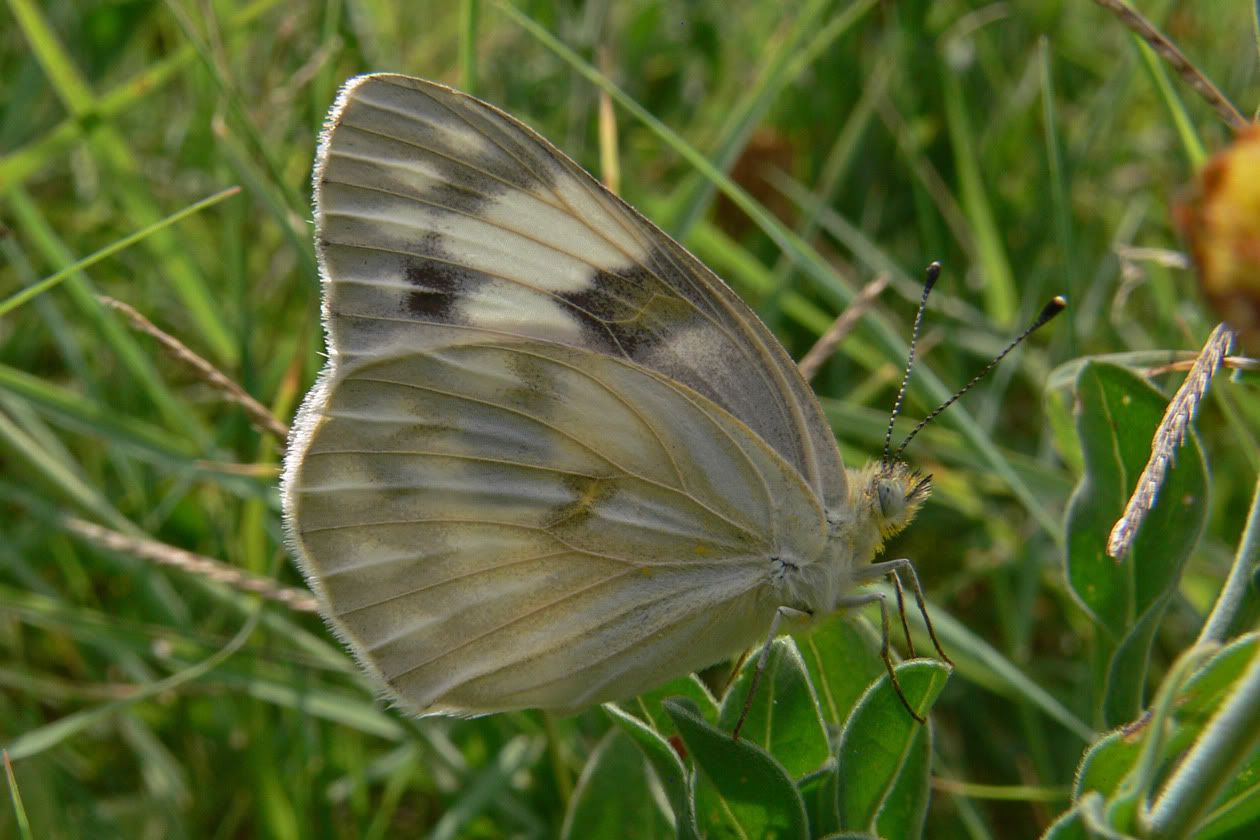
Blues:
Reakirt's Blue Hemiargus isola
Click for shot
Hairstreaks:
Gray Hairstreak Strymon melinus -- everywhere I go!
Brushfoots:
Buckeye Junonia coenia
American Lady Vanessa virginiensis
Painted Lady Vanessa cardui
Click for shot
Queen Danaus gilippus -- I saw no milkweeds, but the Queens were common enough!
Click for shots
Phaon Crescent Phyciodes phaon -- these limited themselves to the edges of ponds. Update: it turns out that they were hanging out near their hostplant, Frogfruit Lippia nodiflora
Click for shots
Swallowtails:
Black Papilio polyxenes
Skippers:
Fiery Skipper Hylephila phyleus
Southern Skipperling Copaeodes minima
JRC
Read more...
Posted by
Jeff Cagle
at
12:57 AM
0
comments
![]()
Labels: Butterflies
Thursday, July 9, 2009
Jesse H Jones Park 6/8/09
Jesse H Jones Park, located just north of Houston's Intercontinental Airport, has some really nice butterfly habitat.
In the trip last month, I saw the following:
Palamedes Swallowtail
Spicebush Swallowtail
Pipevine Swallowtail
Red Banded Hairstreak
Gray Hairstreak
Pearl Crescent
Texas Crescent
Gulf Fritillary
Little Yellow
Orange Sulphur
Carolina Satyr
Funereal Duskywing
Horace's Duskywing
Common Checkered-Skipper
Little Glassywing?
Fiery Skipper
Southern Broken-Dash?
On a previous visit in 2008, I saw a White-Striped Long-Tail!
Click for Shots
Funeral Duskywing Erynnis funeralis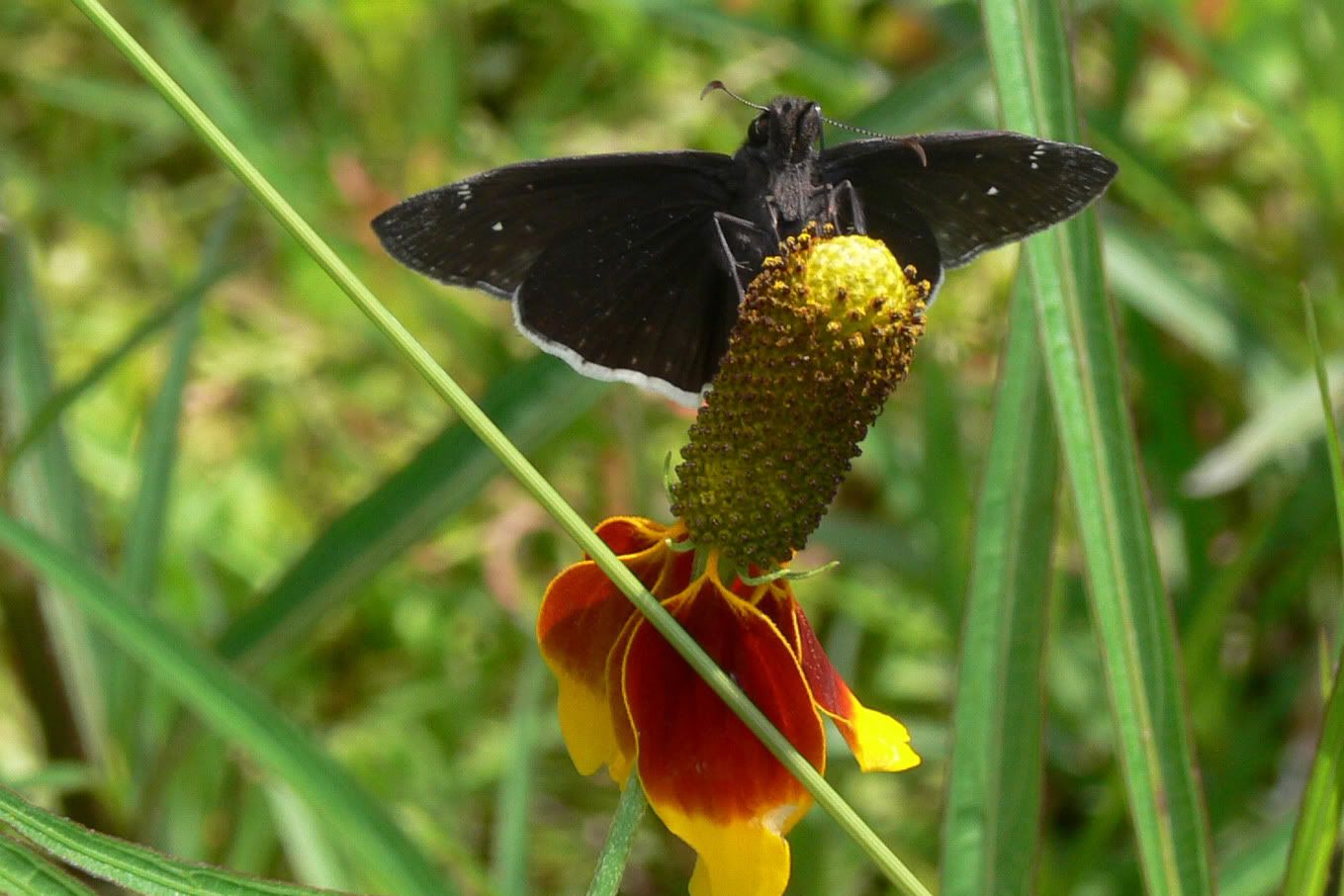
Southern Broken Dash Wallengrenia otho? I'm open to correction on this ID.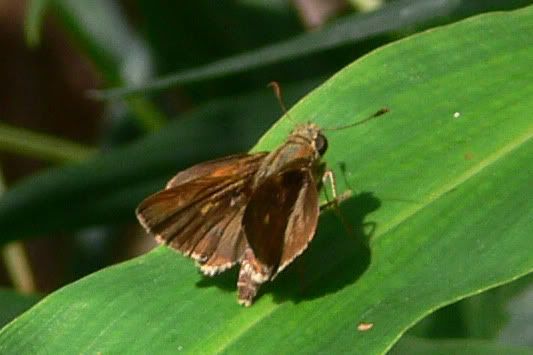
Common Checked-Skipper Pyrgus communis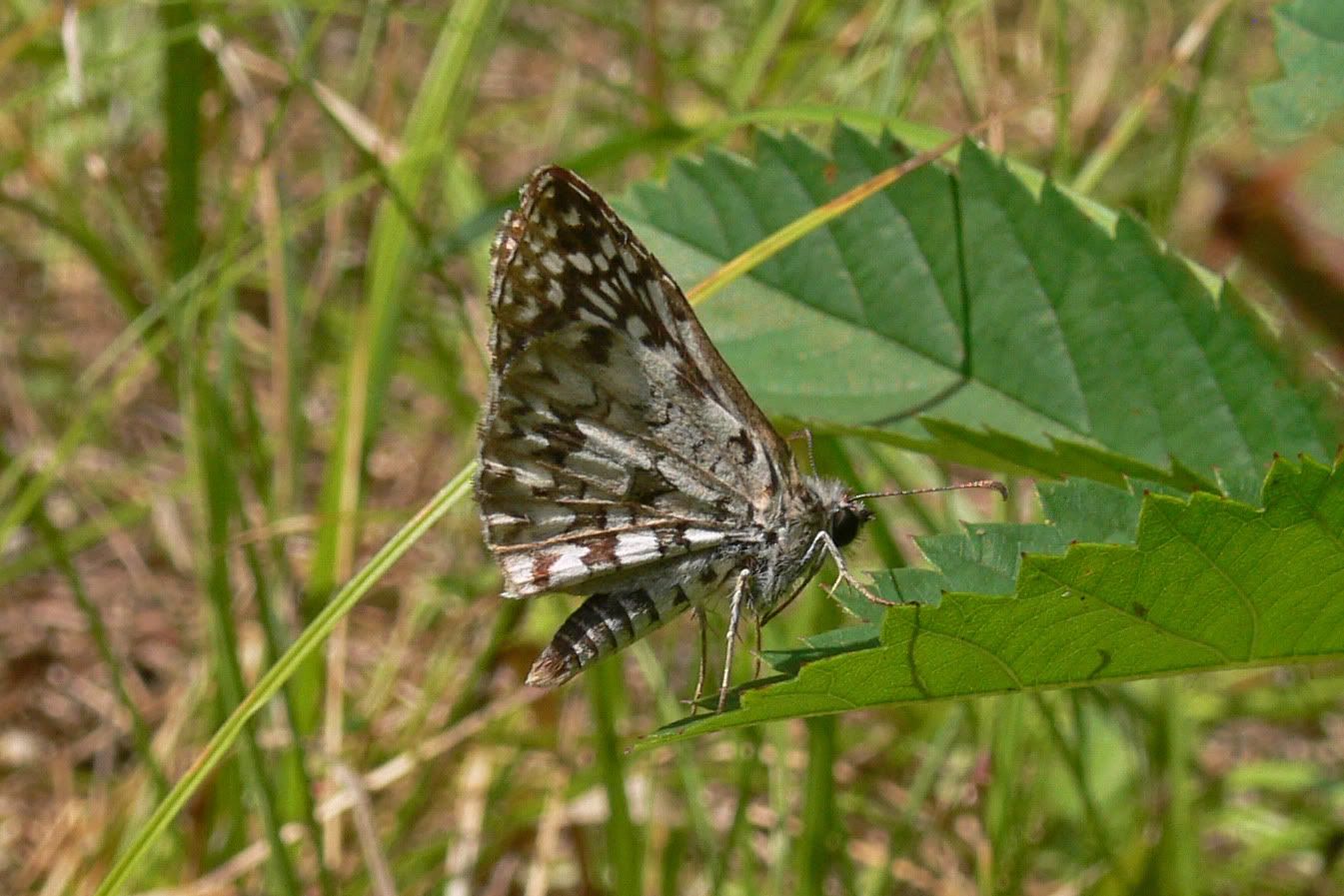
This individual demonstrates the blue sheen that sometimes makes these seem like Blues in flight.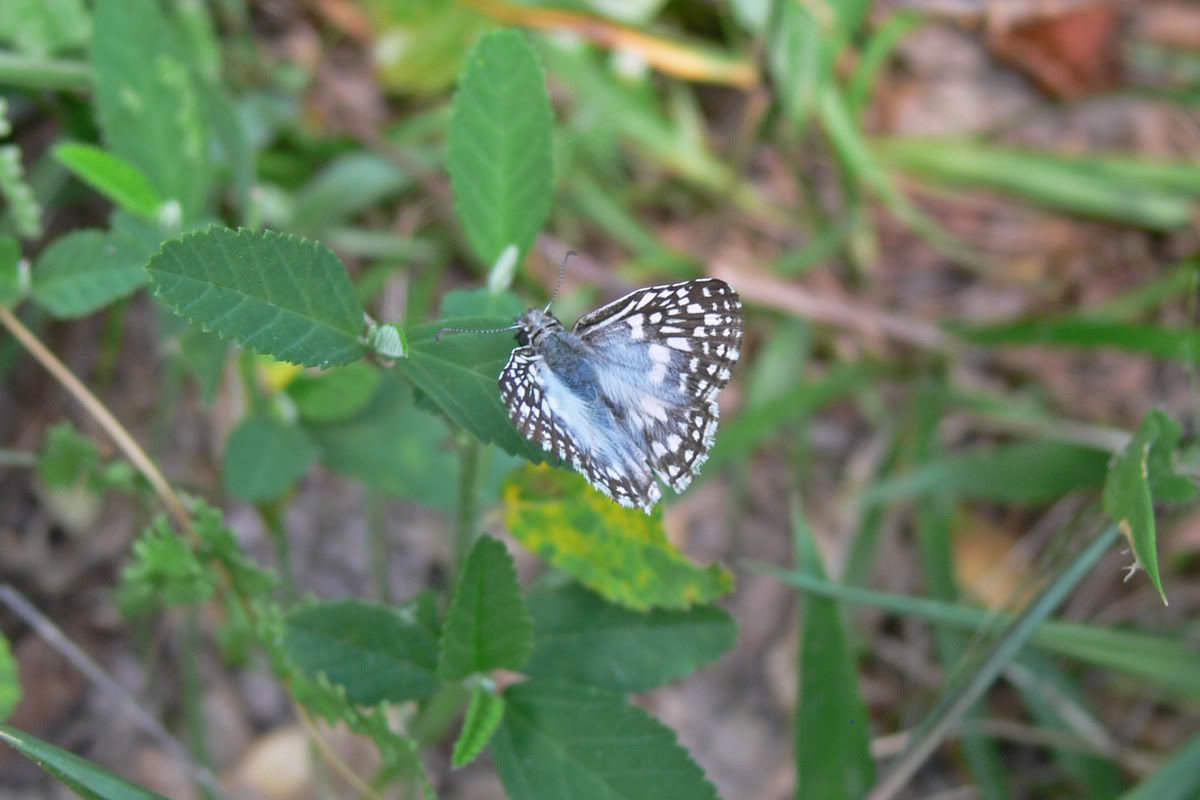
Texas Crescent Phyciodes texana
This individual had marked out a 40-ft swath of forest path as his territory. I found him pacing back and forth, lighting and puddling at times.
Gray Hairstreak Strymon melinus
Everywhere I go, there's a Gray Hairstreak! These butterflies are more ubiquitous than even the Cabbage White.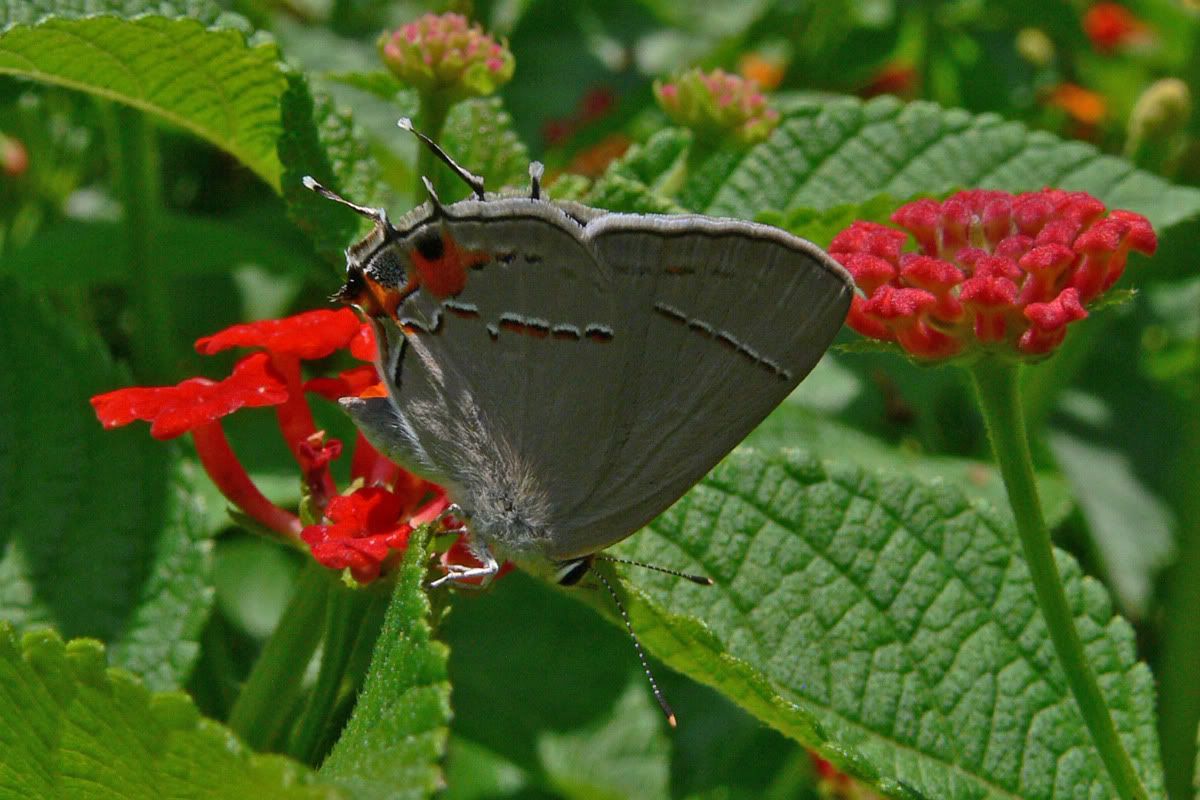
Little Glassywing Pompeius verna?
Frankly, I'm not happy with this ID. The antennae lack the white band behind the club that we use as a field mark here in MD. And the grizzled appearance inside the median is not like any P. verna I see here. However, it's a reasonably close match, and my memory of the topside matches P. verna best. So that's my story for now, until someone corrects me.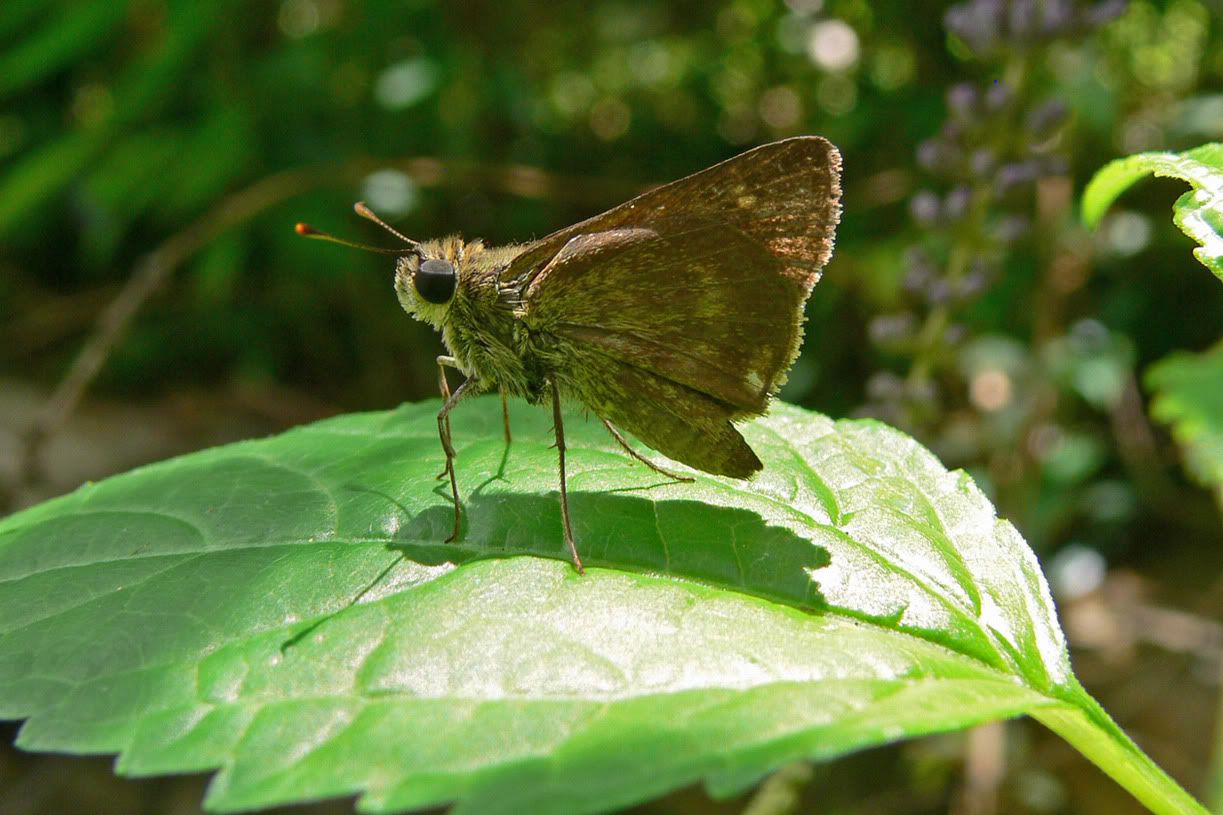
JRC
Read more...
Posted by
Jeff Cagle
at
11:45 PM
0
comments
![]()
Labels: Butterflies

